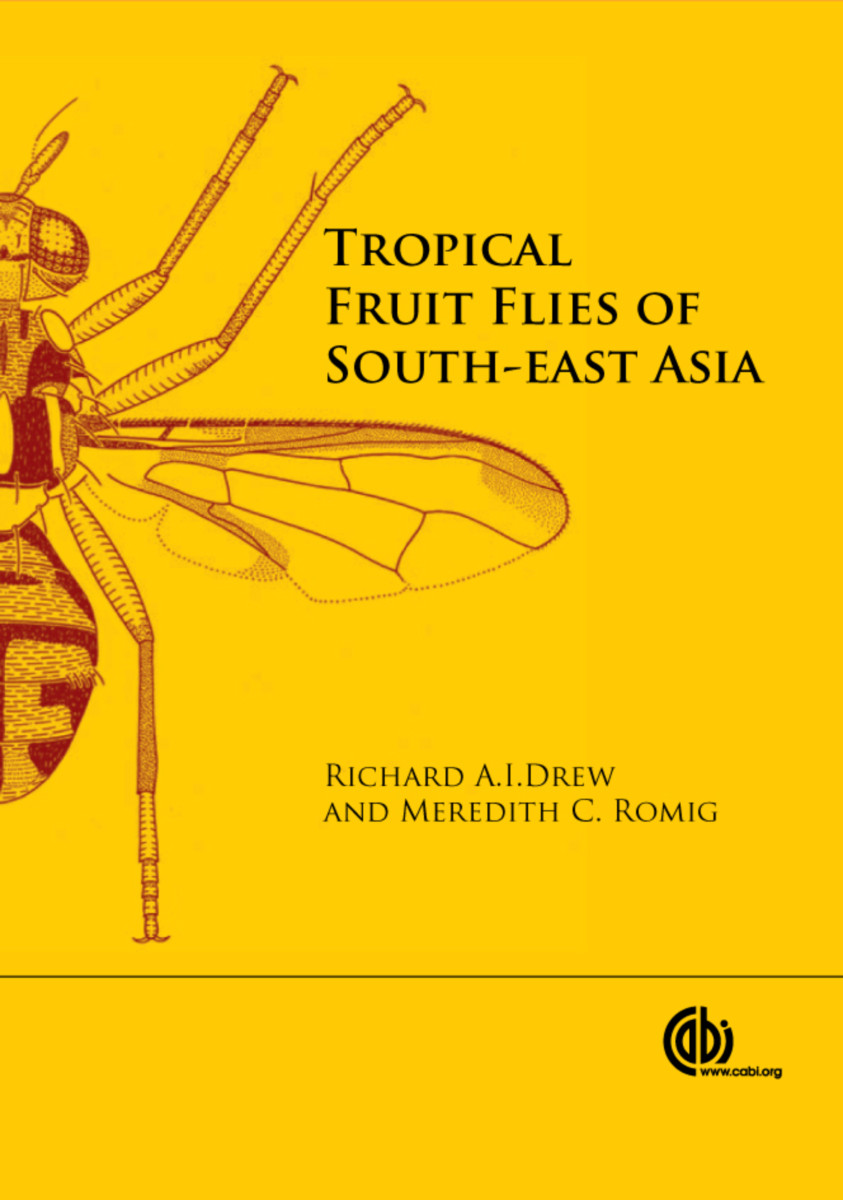Tropical Fruit Flies of South-East Asia
(Tephritidae: Dacinae)
- Publisher
CABI - Published
8th January 2014 - ISBN 9781780640358
- Language English
- Pages 664 pp.
- Size 8.75" x 11.75"
- Images line illus
As global warming and species migration become more prevalent issues, there is an urgent need for a text that provides comprehensive taxonomic details and geographic distributions of Dacinae fruit flies within south-east Asia. In particular, some of the major pest species of this region are being introduced on a regular basis to new geographical areas, causing widespread food security issues and economic hardship. Quarantine and horticultural organizations require detailed information on these fruit fly species in order to detect and eradicate any new incursions. This major new reference work details the taxonomic research into the subfamily Dacinae, which contains the tropical fruit flies of south-east Asia, as well as many other regions of the world.
While focusing on south-east Asian fauna, all known species are included, through a study of the type material available in museums around the world. Specimens collected in major surveys conducted across Asia from 1983 to present have also been used to ensure a complete, in-depth review of this subfamily.
Providing complete descriptions and artwork of all species of Dacinae recorded from the south-east Asian region for the first time, this book is written and illustrated by experts with over 80 years' combined research experience. Areas covered include: India, Bhutan, Nepal, Sri Lanka, Myanmar, China, Taiwan, Japan, the Philippines, Palau, Vietnam, Thailand, Singapore, Malaysia and Indonesia. It is an essential reference for departments of agriculture, researchers and students of entomology and quarantine, horticultural and chemical industry personnel worldwide.
Key features:
- 120 recently discovered species
- 500 detailed drawings
- Revision of all known species
- Updated geographical distributions and host records
- Accurate list and detailed information of all known pest species
This book will be followed by Keys to Fruit Flies of South-East Asia.
Abstract
Introduction
Methods and Abbreviations
Generic and Subgeneric Classification
Definitions of Genera
Definitions of Subgenera
Species Listed Under Genera and Subgenera
Species Complexes
Bactrocera (Bactrocera) dorsalis complex
Bactrocera (Bactrocera) nigrotibialis complex
Bactrocera (Zeugodacus) scutellaris complex
Bactrocera (Zeugodacus) tau complex
Identification of Cryptic Species
Description of Species Under Genera and Subgenera
Genus Bactrocera Macquart
Subgenus Afrodacus Bezzi
Asiadacus Perkins
Bactrocera Macquart
Bulladacus Drew & Hancock
Daculus Speiser
Gymnodacus Munro
Hemigymnodacus Hardy
Javadacus Hardy
Nesodacus Perkins
Papuodacus Drew
Paradacus Perkins
Parasinodacus new subgenus
Paratridacus Shiraki
Parazeugodacus Shiraki
Semicallantra Drew
Sinodacus Zia
Tetradacus Miyake
Zeugodacus Hendel
Genus Dacus Fabricius
Subgenus Callantra Walker
Didacus Collart
Leptoxyda Macquart
Mellesis Bezzi
Neodacus Perkins
Genus Ichneumonopsis Hardy
Genus Monacrostichus Bezzi
Pest Species in the Genera Bactrocera and Dacus
Figures
References
Taxonomic Index
Richard A. I. Drew
Richard Drew is a leading world authority on the taxonomy, ecology and behavior of tropical fruit flies in the tephritid sub-family Dacinae. His research has led to the definition of all known major pest species and a sound knowledge of their ecology and pest management strategies. He has published over 140 research papers and three major books. He has received a range of awards including the Order of Australia and the Clunies Ross National Science and Technology Award, Australia’s most prestigious science award. He is also a fellow of the Australian Academy of Technology and Engineering.
Meredith C. Romig
Meredith Romig has collaborated with Richard Drew for over four decades and has developed an extensive knowledge of fruit fly entomology. She has undertaken extensive field research in many countries, co-authored numerous publications and has developed excellence in technical editing of scientific works. She also pioneered the scientific artwork which is used in her current publications describing fruit fly species.


